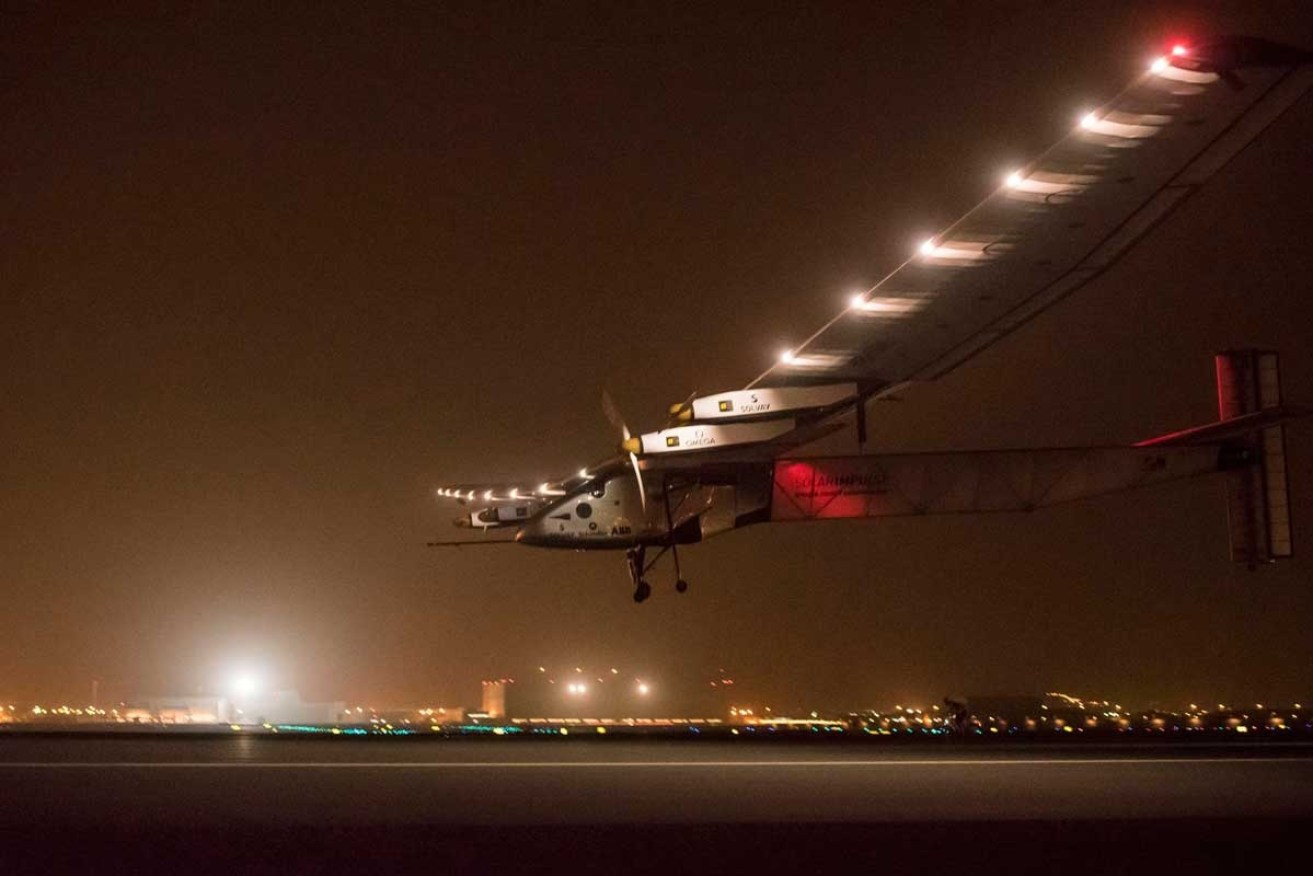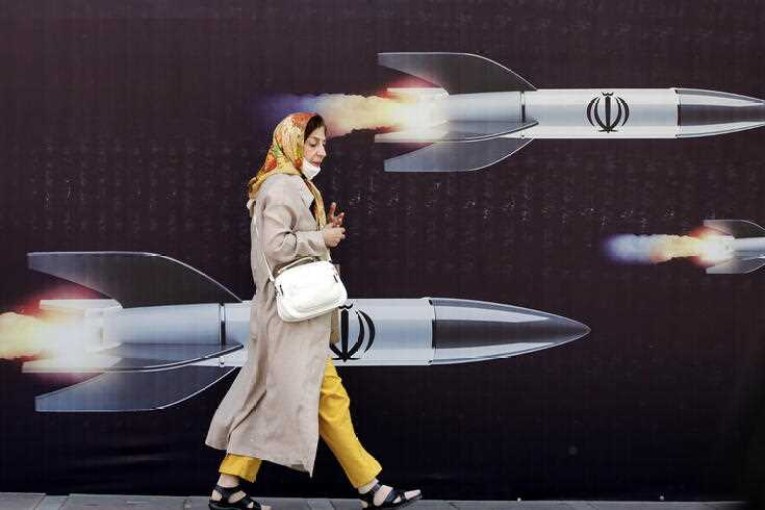When flying too close to the sun is a good thing

Solar Impulse 2 has landed in Oman after the first leg of its epic bid to become the first solar-powered plane to fly around the world, in a test of its pilots’ endurance.
The aircraft touched down in Muscat after nightfall, 13 hours and two minutes after taking off from Abu Dhabi.
On a pitch-black evening, only a line of white-and-blue lights appeared to approach the runway as Si2 touched down.
• Where in the world is flight MH370?
• MH370 underwater locator batter ‘expired’: report
Pilot Andre Borschberg was at the controls on the 400-kilometre trip.
“The adventure has started,” Solar Impulse chairman Bertrand Piccard had said just after Borschberg took off in the early morning from Abu Dhabi’s Al-Bateen airport on the historic journey aimed at promoting green energy.
Borschberg spoke of an “emotional” trip, telling reporters in Muscat he cruised at 6000 metres because the trip was “short”.
Piccard, due to fly Tuesday’s second leg to Ahmedabad in India, will fly higher, Borschberg said.
Both pilots wore traditional Omani turbans as they received an official welcome in the Gulf sultanate.
“We have to go and get a bit of sleep because tomorrow we start very, very early,” Piccard said, without specifying the time of departure.
UN chief Ban Ki-moon hailed the venture and congratulated the pilots.
“We take inspiration from their example and efforts to harness the power of multilateralism to address climate change and to inspire the world to achieve sustainable development,” his spokesman said.
“With their daring and determination, we can all fly into a new sustainable future.”
Si2’s takeoff, which had originally been scheduled for Saturday but was delayed by high winds, capped 13 years of research and testing by the two Swiss pilots.
Live video streaming on the www.solarimpulse.com website monitoring the unique aircraft’s progress showed the pilot breathing using an oxygen mask.
The wingspan of the one-seater Si2 is slightly bigger than that of a jumbo jet, but its weight is about that of a family car.
From Muscat, it will make 12 stops on an epic journey spread over five months, with a total flight time of around 25 days.
On Tuesday, it is set to cross the Arabian Sea to Ahmedabad before later legs to Myanmar, China, Hawaii and New York.
Landings are also earmarked for the midwestern United States and either southern Europe or North Africa, depending on the weather conditions.
The longest single leg will see a lone pilot fly non-stop for five days and nights across the Pacific Ocean between Nanjing, China and Hawaii, a distance of 8500 kilometres.
Borschberg and Piccard will alternate flying the plane, which can fly on autopilot during rest breaks.
Both pilots have undergone intensive training in preparation for the trip, including in yoga and self-hypnosis, allowing them to sleep for periods as short as 20 minutes but still awake feeling refreshed.
All this will happen without burning a drop of fuel.
“We want to share our vision of a clean future,” Piccard said of the mission, which was ridiculed by the aviation industry when it was first unveiled.
But the 57-year-old, who hails from a family of scientist-adventurers and in 1999 became the first person to circumnavigate the globe in a hot air balloon, clung to his belief that clean technology and renewable energy “can achieve the impossible”.
The plane is powered by more than 17,000 solar cells built into its wings.
The propeller-driven craft has four 17.5 horsepower electric motors with rechargeable lithium batteries.
It travels at 50-100km/h, but slower at night to prevent the batteries from draining too quickly.








